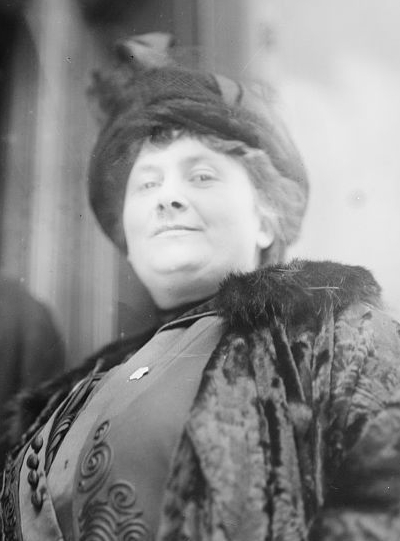5 Facts about Montessori, Waldorf & Reggio Emilia Schools
Montessori, Waldorf, and Reggio Emilia -inspired schools are three highly-regarded early education methods. Here are five facts about each method together with links and videos to additional materials which I have selected to enhance your research. Choosing the right school for your child is a process. Follow all the steps in that process and you will be rewarded with a good result. Cutting corners or waiting until the last minute will stress you out and not produce the intended results.
Five Facts about Montessori
Montessori is the name of a very popular approach for teaching preschool and primary age children. We'll explore the reasons for its popularity later. First, let's examine how Montessori got its start. As with many great movements, Montessori began with an idea and some theories put forth by one of those remarkable visionaries who dot the pages of history.
 Dr. Maria Montessori (1870-1952) was born and raised in Italy. She came from a family of modest means. Her father did not approve of his daughter's desire to be educated much less to become a doctor. Women didn't do such things back at the end of the 19th century. Despite the many obstacles which stood in her way Maria earned her degree from the University of Rome in 1896. Her specialty was pediatric medicine.
Dr. Maria Montessori (1870-1952) was born and raised in Italy. She came from a family of modest means. Her father did not approve of his daughter's desire to be educated much less to become a doctor. Women didn't do such things back at the end of the 19th century. Despite the many obstacles which stood in her way Maria earned her degree from the University of Rome in 1896. Her specialty was pediatric medicine.
While Dr. Montessori was working towards her degree, she had studied and worked with mentally disabled children. She got her chance to put her experience, observations, and theories into practice when she was invited to open a school for the children of working-class families in a low-income housing project in Rome in 1907. The first Casa dei Bambini was a traditional school with desks and chalkboards and all the other accouterments of classrooms of the day. Dr. Montessori herself did not teach. She left that task to the building porter's daughter.
Dr. Montessori observed the children becoming deeply involved in their work and their play. She began organizing their day and their classroom environment to encourage self-discipline and responsibility. Her idea was to "follow the child." The classroom space, the materials, the desks, the flow of the day all had to flow from this central tenet of Montessori. Teachers were supposed to be guides, not stern taskmasters. Needless to say, Dr. Montessori's approach was quite different from what was commonly found in elementary classrooms of the day. Yet her first Casa dei Bambini was successful and her methods gained the attention and approval of other educators and civic leaders. Her second Casa dei Bambini opened later in 1907.
Dr. Montessori began to develop the teaching materials we know recognize as Montessori to support reading, writing, and mathematics. She codified her approach in The Method of Scientific Pedagogy Applied to the Education of Children in the Children's Houses.
Here are then are five facts about Montessori schools to consider when exploring preschools and primary schools for your child.
1. There are over 8,000 Montessori schools in the U.S.
Most Montessori schools belong to the American Montessori Society or the Association Montessori Internationale which was founded in 1929 by Dr. Montessori herself. Depending on which association a school belongs to, if it belongs to one at all, it will also have regional and state associations available to it of which it may be a member.
While Dr. Montessori began her work in the inner city with children from low-income families, her approach has taken root in middle-class America. Search on Private School Review for Montessori schools within, say, a 10-mile radius of a zip code in most urban areas and you will be rewarded with dozens of Montessori schools from which to choose.
2. Not every Montessori school is the genuine article.
Dr. Maria Montessori never trademarked the name 'Montessori'. As a result, anybody can call their school Montessori if they so choose. But does that mean the school adheres to Dr. Montessori's principles and methods? Not exactly. You will only learn if it is the real thing if you know what to look for and what questions to ask.
A trained, credentialed Montessori teacher has been thoroughly trained and is experienced in Montessori principles, concepts and methods. The American Montessori Society offers information about becoming a Montessori teacher.
This video explains the key fundamentals of the Montessori Method.
From the American Montessori Society: "Components necessary for a program to be considered authentically Montessori include multiage groupings that foster peer learning, uninterrupted blocks of work time, and guided choice of work activity. In addition, a full complement of specially designed Montessori learning materials is meticulously arranged and available for use in an aesthetically pleasing environment." ...An Introduction to Montessori
Beautiful materials which children learn to treasure: "The Montessori school environment is arranged according to subject area -- cooking, cleaning, gardening, art, caring for animals, library corner, etc. -- children always free to move around the room instead of staying at desks. There is no limit to how long a child can work on something she has chosen." ...The International Montessori Index
3. Montessori schools are individually owned and operated.
Montessori schools are not a franchise operation. Each Montessori school is individually owned and operated. Many small schools are proprietary schools owned by an individual. Others are not for profit entities governed by a board of trustees. Most Montessori schools are small with less than 100 children. Individual ownership and small size can mean that a school's viability is very much dependent upon the sound business practice and experience of the owner. A school established as a not-for-profit organization overseen by a board of trustees will have a broader base of interested supporters. Both business models have their advantages and disadvantages. Make sure that the school is well-managed and is fiscally sound.
In this short video, The Montessori Foundation explains how to start a Montessori school.
The degree to which any school can be called Montessori is dependent on several factors. That is why it is so important for parents to read about Montessori and understand all that it entails. Then evaluate each school on your shortlist comparing them with the Montessori tenets and elements which you feel are essential for your child's education.
4. Montessori schools are considered progressive schools.
If you are looking for a so-called 'traditional' style of teacher-directed learning, then you will be disappointed. Montessori schools are almost always 'progressive' schools. Their classes are multi-age and teacher-guided. The teacher hovers on the sidelines observing, helping and guiding the learning process.
The Teacher's Role: "The teacher, child, and environment create a learning triangle. The classroom is prepared by the teacher to encourage independence, freedom within limits, and a sense of order. The child, through individual choice, makes use of what the environment offers to develop himself, interacting with the teacher when support and/or guidance is needed." American Montessori Association
Is Montessori for all children? "There is no one school that is right for all children, and certainly there are children who may do better in a smaller classroom setting with a more teacher-directed program that offers fewer choices and more consistent external structure. Children who are easily overstimulated, or those who tend to be overly aggressive, may be examples of children who might not adapt as easily to a Montessori program." The Montessori Foundation
5. Montessori schools use specially designed materials.
Dr. Montessori designed sensorial materials for the purpose of developing a child's five senses. The materials include the cylinder blocks, the pink tower, the brown or broad stair, the red rods, the colored cylinders and more. As well there is a host of other materials used for the learning and discovery activities of older children. Upper school teachers are usually expected to develop their own materials.
Learning materials: "In the Montessori classroom, learning materials are arranged invitingly on low, open shelves. Children may choose whatever materials they would like to use and may work for as long as the material holds their interest. When they are finished with each material, they return it to the shelf from which it came." North American Montessori Teachers' Association
This brief video shows how mathematics is taught to pre-school children in a Montessori class.
Implicit in these five facts about Montessori is the reality that your child is beginning an incredible journey. If you decide to send him to a Montessori school, you must remain involved with his education on a daily basis. His teacher is his guide at school. You are his guide for life. 24/7. You will always know what is best for him. Never forget that.
Five Facts About Waldorf Schools
As you explore your elementary school options, take time to find out about Waldorf education. Waldorf schools, or Steiner schools as they are often called, had their genesis in the writings and philosophy of Austrian philosopher and social reformer Rudolf Steiner (1861-1925). To put Steiner into context, think of him as northern Europe's equivalent of Dr. Maria Montessori.
These two remarkable people shared something in common which would ultimately lead to the establishment of educational movements based on their philosophies and approaches: namely that children from the less-privileged strata of society were capable of achieving the same levels of academic accomplishment as children from more privileged homes. The key to success was their approach to teaching children as well as their insistence that the traditional ways of educating children not be used. Also both Montessori and Steiner insisted on complete control of their schools. No state or local government interference would be tolerated.
Maria Montessori established her school in the poorest neighborhood of Rome because she was convinced that every child, no matter what his social circumstances, was capable of learning. Dr. Montessori carefully observed the children in her school and recorded the results of her experiment.
Like Dr. Montessori, Rudolf Steiner earned a doctoral degree. He received his Doctor of Philosophy from the University of Rostock in 1891 and established his first school for the children of factory workers in 1919.
Today Waldorf schools offer an alternative to traditional K-12 schools. Whereas in many traditional schools subjects are taught, in a Waldorf school, subjects are experienced. Waldorf schools incorporate the arts into every subject which is taught.
Here are five facts about Waldorf schools to help you find the right school for your child.
1. Waldorf schools can be found worldwide.
With his research into childhood and human development, Rudolf Steiner started the movement known as Waldorf. His first school was established for children of factory workers at a cigarette factory in postwar Germany in 1919. The name Waldorf came from the Waldorf-Astoria Cigarette Company which was owned by Emil Molt. Molt had asked Steiner to lecture his factory workers on education and then to establish a school for their children. Steiner schools spread to other European countries. There are now over 1,000 Waldorf schools worldwide.
Unlike Montessori schools which have multiage classes, Waldorf schools generally are K-12 schools. The Steiner method calls for three levels of education following a child's natural growth and developmental patterns. The Montessori teacher guides a multi-age classroom. The Waldorf teacher stays with her class across several years, as a rule, seven years.
2. Child-centered and teacher-guided instruction is a hallmark of Waldorf education.
Teaching in Waldorf schools is child-centered and teacher-guided. A focus on the child is something that Waldorf schools share with Montessori and other progressive schools. Whereas Maria Montessori created materials for her students to work with, discover and learn, the Waldorf approach depends on the students to develop their imaginations by creating their own materials. The arts are integrated into every lesson and assignment in a Waldorf classroom.
Another feature of Waldorf is that the teacher moves or grows with the class from 1st through 8th grades. In other words, the class has the same teacher for those important, formative years. Unlike Montessori classes where the teacher is an observer the Waldorf teacher carefully guides and directs his students.
An Ascending Spiral of Knowledge explains the Waldorf curriculum and how it is taught. What is important to you and me as we evaluate a Waldorf school for our children is to understand that Waldorf schools are progressive schools. You will not find teachers teaching to a test or issuing grades to students. That approach does not fit into the Steiner philosophy of education.
The other point to make is that Steiner was a philosopher. A very erudite and very distinguished philosopher. Indeed he developed his own brand of philosophy which is known as anthroposophy. While anthroposophy per se is not taught in Waldorf classrooms, it underpins all that goes on in the classroom. You will notice the positive effect this approach brings to all your child's activities. Ideas and facts are not confined to educational silos. They are integrated across the curriculum horizontally and vertically over time. It may take you a few minutes to grasp Waldorf concepts as it certainly did for me. My eldest daughter attended a Waldorf school. It was a wonderful experience which opened her mind to so many things.
Another point to note: Waldorf schools are non-sectarian and non-denominational.
3. Each Waldorf school is a free-standing legal entity.
Waldorf schools are individually owned and operated. Waldorf schools are not a franchise operation. Each Waldorf school is individually owned and operated. Most schools are not for profit entities governed by a board of trustees. A unique aspect of a Waldorf school's governance is that the teachers run everything on a day to day basis. Parents are also actively involved in the school's life. All genuine Waldorf schools are authorized and accredited by the Association of Waldorf Schools of North America.
Waldorf teacher training programs are available in several locations nationwide. These programs typically run from one to three years depending on the trainee's background and attainments. Recently there have been more openings for Waldorf teachers than applicants.
4. Waldorf schools are progressive schools.
Waldorf schools are considered progressive schools. Like Montessori schools, you won't find a regimented, traditional learning environment in a Waldorf school. The classes do follow the traditional grade structure. The Waldorf approach means that the same teacher will stay with the class from 1st through 8th grade.
The value of teacher continuity in the Waldorf setting is enormous. The same set of children which the teacher knows so well moves up with her to the next level. There is no adjusting to a new, unfamiliar teacher. Instead, more layers of knowledge are added with that familiar, trusted guide in charge.
5. Waldorf schools have arts integrated across the curriculum.
The Waldorf curriculum emphasizes the arts and development of children's imaginations. Music and an artistic form peculiar to Waldorf schools known as eurythmy are integral parts of a curriculum centered on core subjects. English language and writing, poetry, drama, history, foreign languages, mathematics, geography, and the sciences are all components in a Waldorf high school curriculum. AP courses and SAT preparation are not something which you will find in a Waldorf high school. A young adult accustomed to discovery and experiencing learning is the typical Waldorf graduate.
One of the elements of a Waldorf curriculum which is not commonly found in other schools is Eurhythmy. Rudolf Steiner created this performance art which is also used in movement therapy. It is an integral part of Waldorf curricula and complements the gymnastics component. Eurhythmy is a Greek word which means harmonious rhythm.
How do Waldorf students fare with college acceptances?
I know what you are thinking. My child has spent 12 years at this school which I think is wonderful and has done so much for my child. But she has no SAT scores. She hasn't done any Advanced Placement courses and examinations. Don't be concerned. Colleges base their decisions on much more than standardized tests. Remember that college admissions offices are looking for applicants who can think critically, who are aware of more than just facts and who can contribute their unique individuality to the college community.
Notable Waldorf graduates include Kenneth Chenault, retired CEO of American Express, Jennifer Aniston and Sondra Bullock, actresses, to name just three.
Five Facts About Reggio Emilia
Reggio Emilia is an approach to early childhood education which originated in Italy after World War II. While not as widely known as the Montessori and Waldorf methods, Reggio Emilia has attracted a small but extremely loyal following in the United States. You will not find many schools styled Reggio Emilia as you will with Montessori or Waldorf schools, for instance. What you will find are schools which draw heavily on Reggio Emilia ideas and philosophy. They often refer to themselves as Reggio Emilia-inspired schools.
This short video gives us an overview of the Reggio Emilia approach.
The foundation of the Reggio Emilia approach can be found in the movement's principles.
- Children must have some control over the direction of their learning;
- Children must be able to learn through experiences of touching, moving, listening, and observing;
- Children have a relationship with other children and with material items in the world that children must be allowed to explore;
- Children must have endless ways and opportunities to express themselves.
What then is Reggio Emilia? Here are five facts about it. There's much more to Reggio Emilia, of course, but this will give you an idea of what it is all about.
1. It is strictly an early childhood education approach.
Reggio Emilia values "the potential of all children to think, learn, and construct knowledge." Like Montessori, Reggio Emilia is a progressive, child-centered approach to education. The idea is that the child must be free to discover and to learn for himself. Reggio Emilia does not go any further than the early childhood years. It focuses on toddlers and preschool children.
2. It is not a formal, doctrinaire approach.
Unlike the Waldorf and Montessori schools, there is no formal teacher training, credentialing and authorization process for Reggio Emilia. The idea is that teachers and parents take the concepts learned by observation and interaction with Reggio Emilia and incorporate them into their classrooms. There is no such thing as a Reggio school. The only Reggio schools are those in the municipality of Reggio Emilia. All other schools which embrace the Reggio philosophy are considered to be "Reggio inspired".
3. It grew out of the aftermath of World War II.
Much of Italy lay in ruins after World War II. In Reggio Emilia, a young teacher by the name of Loris Malaguzzi developed an approach that valued the ability of children to learn spontaneously. The relationship of child, parent, and teacher is integral to the Malaguzzi approach. The Reggio and Steiner (Waldorf) schools both arose as a result of the aftermath of armed conflict and the need to rebuild society.
4. Reggio Children is the organization that promotes the Reggio approach.
Reggio Children is a formal entity that was founded in 1994. It is headquartered in the municipality of Reggio Emilia in Italy. The ownership is split, with 51% of the shares held by the municipality. It offers training materials and courses designed to promote the Reggio approach throughout Italy and the world. It is affiliated with and draws support from dozens of national organizations in countries throughout the world.
5. It is an international movement.
Reggio started in a town in Italy in the 1940s. It has now spread worldwide. In North American Reggio is promoted and supported by the North American Reggio Emilia Alliance. It sponsors The Wonder of Learning, a traveling exhibit that explains the Reggio approach. Reggio Emilia has spread to thirty-four countries, where it inspires fifty thousand children and fifteen thousand teachers.
Here is how several schools describe the infusion of Reggio Emilia principles into their early childhood programs.
Carolina Friends Early Schools, Chapel Hill, North Carolina
Children learn through creating deep and lasting relationships with the world around them.
As they relate to one another, they develop essential social skills such as an understanding of inclusivity and conflict resolution.
The children's learning grows from their engagement with the rich and varied materials offered in their classrooms.
In the Early Schools, students, teachers, and families collaborate to set the stage for children to become seekers of knowledge all their lives.
La Scuola International School, San Francisco, California
At La Scuola, we will offer your child the chance to be immersed in the Italian language and culture; we will teach them using the Reggio Emilia-inspired approach in small classes to optimize their learning, and our curriculum is inquiry-based and is inspired by the International Baccalaureate Primary Years Program (IB-PYP). La Scuola is a candidate school* for the Primary Years Programme and our school is pursuing authorization as an IB World School. These are schools that share a common philosophy-a commitment to high quality, challenging, international education that La Scuola believes is important for our students. This world-class education model is grounded in creative and critical thinking, and is relevant to the global challenges of the 21st century.
Melrose Avenue Preschool, Jacksonville, Florida
Melrose Avenue Preschool is an example of the blended approach to early childhood education that many schools adopt. In this case, Reggio Emilia blends with Waldorf.
Melrose Avenue Preschool strives to bring a blended educational environment to the community of young children. Our love of children is woven with the philosophies of the Reggio Emilia Approach and Waldorf Education. Our vision is to create just the right combination for a developmentally appropriate early childhood experience.
Our Neighborhood Child Development Center, Charlottesville, Virginia
We believe children learn best when they are interested and engaged in their learning. That true learning happens not through our teaching but through creation of a space, environment, and opportunity to learn. We know children's brains are designed to learn and develop. We support children and families to see the children's learning and development through their play. Our children learn to communicate through our Reggio inspiration of their 100 languages including art, drama, language, writing, and baby sign. Our role is to support them as they explore the world not to limit their learning by exclusively teaching to our viewpoint or understanding.
Here is a list of Reggio Emilia-inspired schools. Hopefully, one of these fine schools will be located near you.
This article is also available as a podcast.
Questions? Contact us on Facebook or Instagram. @privateschoolreview






















